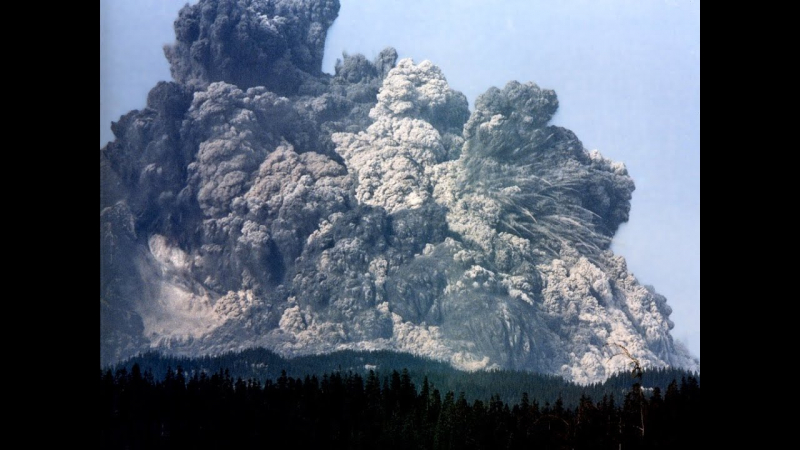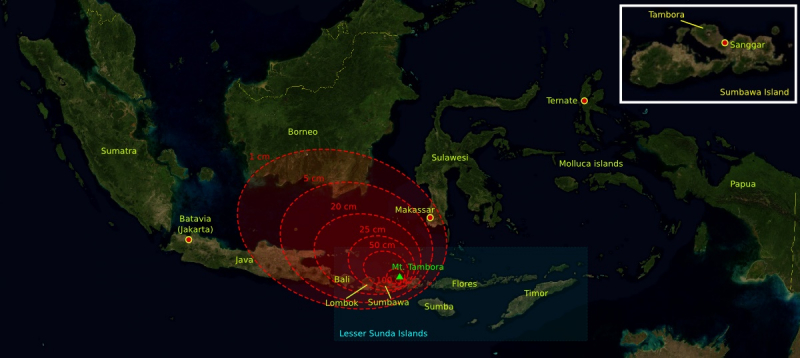Tambora was classified as a VEI-7 eruption
While additional eruptions occurred in 1815, Tambora was classified as a VEI-7 eruption with a column 45 km (148,000 ft) tall, dwarfing all others by at least one order of magnitude. The VEI of the explosion was calculated to be 7. An estimated 41 km3 (10 cu mi) of pyroclastic trachyandesite weighing approximately 10 billion tonnes was expelled. This resulted in a caldera 6-7 km (3+1⁄2–4+1⁄2 mi) broad and 600–700 m (2,000-2,300 ft) deep. In Makassar, the density of fallen ash was 636 kg/m3 (39.7 lb/cu ft). Mount Tambora's peak elevation was around 4,300 m (14,100 ft) prior to the explosion, making it one of the tallest peaks in the Indonesian archipelago. Its peak elevation had reduced to only 2,851 m (9,354 ft) after the explosion, roughly two-thirds of its prior height.
The VEI is used to calculate the amount of material expelled, with a VEI-7 equaling 100 km3 (24 cu mi). Every index number lower than that is one order of magnitude (10 times) less. Furthermore, the 1815 eruption happened during a Dalton Minimum, which was characterized by exceptionally low solar radiation. Volcanism has a significant impact on climate change, both locally and internationally. This was not always recognized and did not become scientific truth until the 1883 Krakatoa eruption turned the skies orange.
The Tambora eruption of 1815 was the greatest recorded eruption in history. The explosion could be heard 2,600 kilometers (1,600 miles) away, and ash fell at least 1,300 kilometers (810 miles) away.










